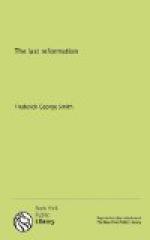The tail of this dragon “drew the third part of the stars of heaven, and did cast them to the earth.” This is not a literal description, for the fixed or planetary stars never fall to the earth. If they did, they would destroy it. The stars are doubtless employed as symbols set in the ecclesiastical firmament, giving light amid the surrounding darkness. Light is so often used as the representative of gospel truth that the application of the stars to prominent characters in the church is obvious. Jesus is the Sun of Righteousness, and his ministers are bright, shining stars—light-givers. The ministers of the seven churches of Asia Minor are represented as stars (chap. 1:20). “They that be wise shall shine as the brightness of the firmament; and they that turn many to righteousness as the stars forever and ever” (Dan. 12:3). The casting down of the third part of the stars, therefore, signifies the warfare which the dragon power waged against the early church, in which conflict the ministers of Christ became the marked objects of heathen wrath.
[Sidenote: The war in heaven]
“And there was war in heaven: Michael and his angels fought against the dragon; and the dragon fought and his angels, and prevailed not; neither was their place found any more in heaven. And the great dragon was cast out, that old serpent called the Devil and Satan, which deceiveth the whole world: he was cast out into the earth, and his angels were cast out with him. And I heard a loud voice saying in heaven, Now is come salvation, and strength, and the kingdom of our God, and the power of his Christ: for the accuser of our brethren is cast down, which accused them before our God day and night. And they overcame him by the blood of the Lamb, and by the word of their testimony; and they loved not their lives unto the death” (Rev. 12:7-11).
The symbolic scene suddenly changes, and instead of the woman and the man child, Michael and his angels appear in conflict with the dragon and his angels. This change of symbols indicates the introduction of a different phase of thought. From the nature of the symbols we can quickly ascertain the reason for this change. The woman represents the true church and is a proper symbol of its unity, beauty, purity, and glory. But there is another phase of the church which can not be represented symbolically by a woman—the militant phase. The church is also an aggressive, fighting power, ready to wage warfare against the powers of evil. We would not expect to see the church left helpless like a woman before a great dragon. We would naturally expect to see divine aid extended, and this is done by the change of symbolic imagery, Michael (Christ) and his angels appearing to wage war against the dragon.




